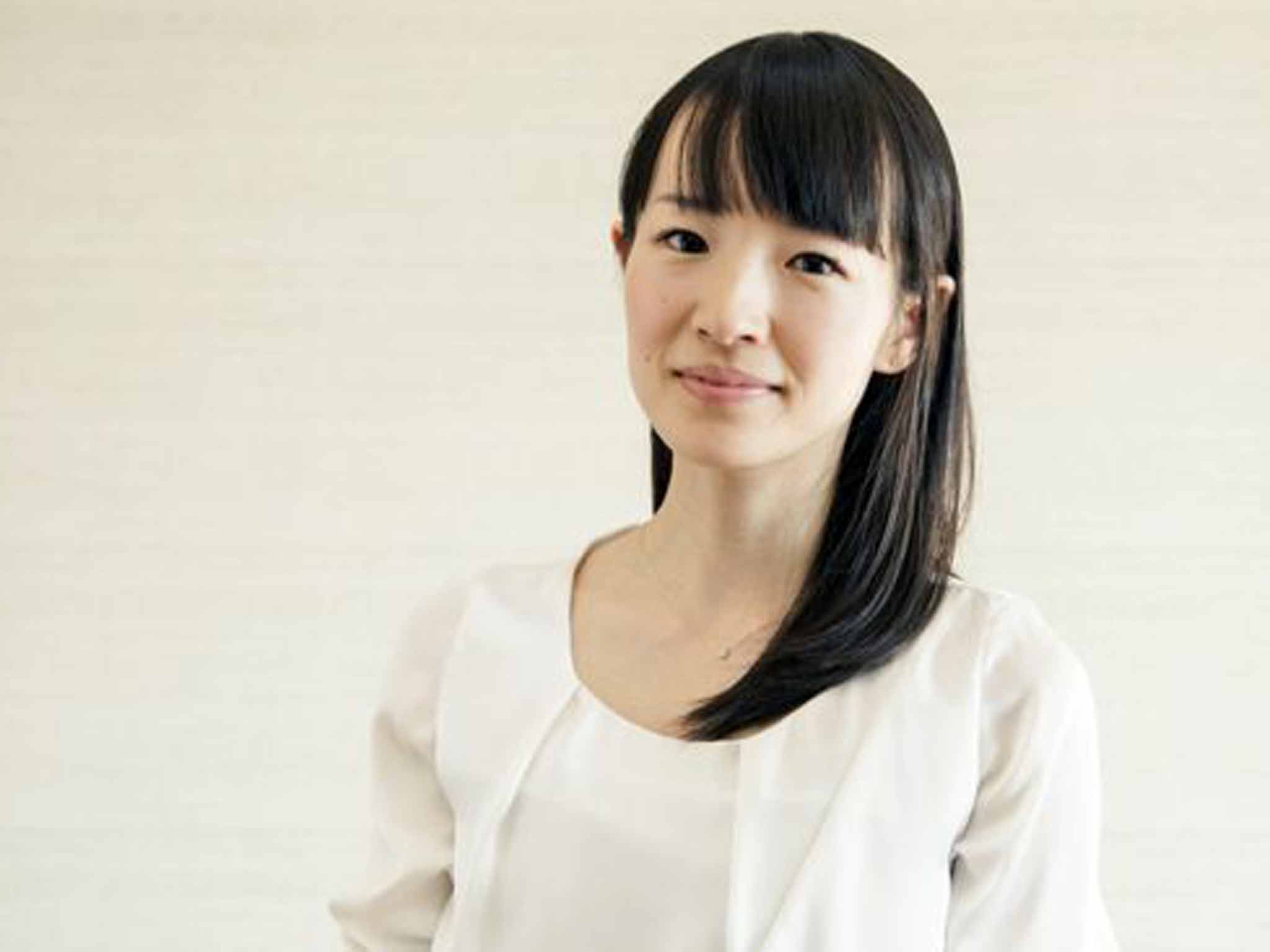Marie Kondo on joy and the art of decluttering: A 'modern-day Mary Poppins'
Tidying has brought Japan's own domestic goddess millions of book sales

Just in time to make good on your New Year's vow to get organised, Marie Kondo, 31, the self-described “crazy tidying fanatic” who has sparked the world with her joy for decluttering, has a new book out to help you.
This week, Kondo's Spark Joy: An Illustrated Master Class on the Art of Organising and Tidying Up, will be published in America. A sequel to her international bestseller, The Life-Changing Magic of Tidying Up, it offers a more detailed guide to her programme to get rid of things that don't “spark joy”.
The new book includes illustrations of how to fold everything, including parkas, underwear and socks, as well as pictures of perfectly organised drawers. Kondo also answers some of the questions raised after her first book, such as what to do about items that don't spark joy but are still needed. (In Kondo's case, it's screwdrivers; and she thanks them every day for not ruining her nails.)
Kondo is a celebrity in Japan – her four books in Japanese have sold a total of 2.2 million copies. In the West, her surname has become a verb (“I just kondoed my wardrobe”). When Time magazine named Kondo one of the 100 most influential people of 2015, actress Jamie Lee Curtis called her a “modern-day Mary Poppins”. And the focus on clearing your head as well as your house has tapped into the global trend for mindfulness.
“I think one of the reasons it's been so popular is because I talk not only about physical decluttering but also about decluttering your mind,” Kondo tells me, sitting ramrod-straight next to bunch of pink flowers that match her skirt. “It doesn't matter whether you're in Japan or overseas, this method shows clearly what's important to you.”
After assessing what sparks joy in their lives, two of her clients have decluttered themselves of their husbands. But the basic principle of her “KonMari” method is this: dump everything you own of a certain category – start with clothes, then move to books, and so on – on to the floor to force a decluttering “shock”; then go through them one by one, deciding whether each item in turn “sparks joy”.
“When deciding, it's important to touch it, and by that, I mean holding it firmly in both hands as if communing with it,” she writes. “When something sparks joy, you should feel a little thrill, as if the cells in your body are slowly rising. When you hold something that doesn't bring you joy, however, you will notice that your body feels heavier.” Anything that doesn't meet this bar gets chucked.
Next, decide where to store each item you are keeping and always put it back in its place. Kondo has a way to fold everything – down to plastic bags – so that each item can stand upright, saving space and making everything visible (but be careful not to squeeze your underwear in too tight or it won't be able to breathe). This method means you will have to declutter only once and then just maintain it, Kondo says, claiming a zero “rebound” rate. As for items which are necessary but not necessarily joyful – such as funeral clothes and those screwdrivers – they should be “showered with praise” and recognised for the way they make life simpler.
In her home, Kondo removes the labels from her laundry detergent and wraps ribbons around it to make it more visually pleasing. But then, Kondo has always been a neat freak. Indeed, she says, she became so obsessed with decluttering that she had a nervous breakdown in high school. But that got her thinking about how to make tidying a happy process – and by deciding what to keep rather than what to discard, Kondo says, she can help people create a “bright and joyful future.”
In Japan, Kondo's decluttering method has become a booming business — run by her husband — which has trained 122 women as certified KonMari consultants. Some of her trainees also run a group called the Japan Spark Joy Decluttering Association, teaching classes to those who want to learn the KonMari method or start a career as a decluttering consultant. And there's an online KonMari Club where members can read essays about decluttering and look at photos of Kondo's life, as well as apply for visits.
In the West, this month, she will launch a smartphone app in English for KonMari devotees, a place where they can post before-and-after photos and share experiences of their decluttering. And in the US, she has just released a “spark joy every day” diary sprinkled with quotes – “Things that are cherished shine” – so that devotees can be inspired as they chronicle their tidying. But of course, if diarising proves as challenging as folding your underwear into little origami triangles every day, you can always add it to the joyless clutter pile.
© Washington Post
Join our commenting forum
Join thought-provoking conversations, follow other Independent readers and see their replies
Comments